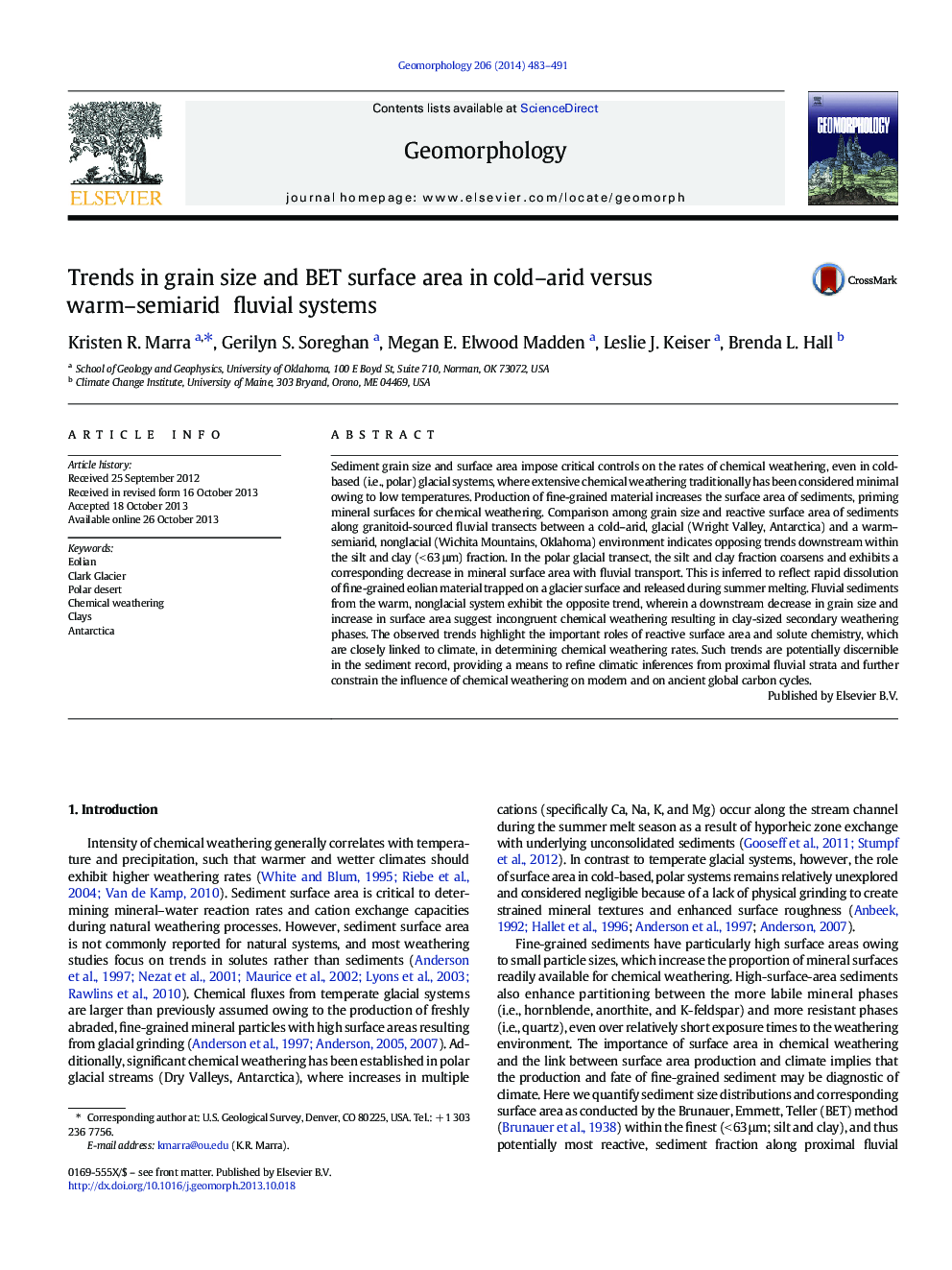| Article ID | Journal | Published Year | Pages | File Type |
|---|---|---|---|---|
| 4684677 | Geomorphology | 2014 | 9 Pages |
•We compare the mud fraction in cold–aridd and warm–semiarid fluvial systems.•We analyze grain size and BET surface area on the mud fraction.•Opposing trends in grain size and BET surface area are recognized in each system.•Grain sizes decrease in the cold-arid system and increase in the semiarid system.•Surface areas increase in the semiarid system and decrease in the cold–arid system.
Sediment grain size and surface area impose critical controls on the rates of chemical weathering, even in cold-based (i.e., polar) glacial systems, where extensive chemical weathering traditionally has been considered minimal owing to low temperatures. Production of fine-grained material increases the surface area of sediments, priming mineral surfaces for chemical weathering. Comparison among grain size and reactive surface area of sediments along granitoid-sourced fluvial transects between a cold–arid, glacial (Wright Valley, Antarctica) and a warm–semiarid, nonglacial (Wichita Mountains, Oklahoma) environment indicates opposing trends downstream within the silt and clay (< 63 μm) fraction. In the polar glacial transect, the silt and clay fraction coarsens and exhibits a corresponding decrease in mineral surface area with fluvial transport. This is inferred to reflect rapid dissolution of fine-grained eolian material trapped on a glacier surface and released during summer melting. Fluvial sediments from the warm, nonglacial system exhibit the opposite trend, wherein a downstream decrease in grain size and increase in surface area suggest incongruent chemical weathering resulting in clay-sized secondary weathering phases. The observed trends highlight the important roles of reactive surface area and solute chemistry, which are closely linked to climate, in determining chemical weathering rates. Such trends are potentially discernible in the sediment record, providing a means to refine climatic inferences from proximal fluvial strata and further constrain the influence of chemical weathering on modern and on ancient global carbon cycles.
